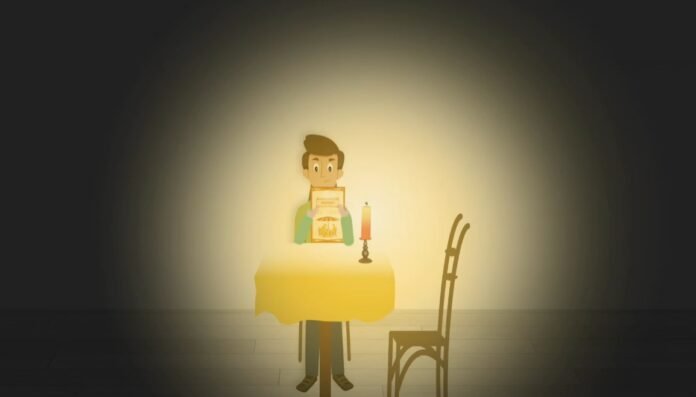Introduction
So, Presbyopia is a disease which in simple terms is the weakening of the eye or in other terms we can also say that this defect results in the gradual loss of vision. In most cases, the defect of presbyopia becomes perceptible in the early 40s and the defect gradually increases till the mid-’60s.
What is Presbyopia?
Presbyopia is the gradual loss of the ability of the eyes to focus on nearby objects, in simple terms we can say that, the eye loses its capability to focus on nearby objects. In most cases, presbyopia is a part of an ageing process. In proper analytical terms, we can say that the ciliary muscles in the eye lose their ideal functioning capability over some time.
Types of Presbyopia
There are 5 main types of presbyopia which are as follows:
1. Premature presbyopia
2. Incipient presbyopia
3. Functional presbyopia
4. Absolute presbyopia
5. Nocturnal presbyopia
Can I have Presbyopia even if I haven’t had any eye problems?
Yes, a person is very subjectable to the defect of Presbyopia even if he/she has never had any visionary problems. In most cases, Presbyopia is expected to be a problem with people over the age of 40 and as a part of the ageing process but in very rare cases we might find the same defect in the younger generation as well.
Symptoms of Presbyopia
The main symptoms of presbyopia are as follows:
- A tendency for the patient to hold the reading material a little farther away for the letter to be clear
- A sensation of blurred vision at a normal reading distance.
- A strain on the eye or a headache after reading some material closely
Factors That make you more susceptible to the defect:
- Age: One of the main factors which make the person more probable to the defect of presbyopia is his/her age. Presbyopia is one of the major effects of the process of ageing and hence with the advancement in the age of the person, he/she is more likely to suffer from presbyopia.
- Other Medical Conditions: Having diseases like diabetes, cholesterol, multiple sclerosis, and cardiovascular diseases can also cause a person to have premature presbyopia which in other terms is the defect occurring in young patients.
- Drugs: Drugs which are mainly of the category of antidepressants, diuretics, antihistamines, etc are also another factor that may pose a serious risk to the patient suffering from the defect of presbyopia.
Is Presbyopia Curable?
Yes, Presbyopia is also curable with the help of a convex lens which is a converging lens that helps the light rays entering the eye to converge on the inner retina of the eye. In other cases, we can also use contact lenses as a cure. In some cases, if the patient is suffering from hyperopia and myopia both then the cure is the usage of a bifocal lens. And a permanent cure is also the Lasik surgery which corrects the eye in a surgical method.
Physics behind Presbyopia
The image above shows a ray diagram of the rays of light entering the eye and then the convergence of the rays of the light inside the eye towards the retina but from the above diagram, we can now understand that the rays of light should converge on the retina but instead, it gets converged outside the retina and hence the image which is formed inside the eye is a blurred image. And this defect is corrected with the help of a convex lens which is a converging lens and hence it converges the light to the correct angle for the convergence to occur on the retina rather than outside.
The image above shows us the convergence of the light rays entering the light and the convergence occurs on the retina hence, the image will be clear as it is formed on the retina and hence the defect is cured using a convex lens.
When to seek medical care
A person is advised to seek immediate medical care in the following cases:
1. When the patient experiences a sudden loss of the vision
2. When there are black spots or halos around the light
3. When the patient experiences double vision.
4. When the patient experiences sudden hazy or blurred vision
Recommended Articles:
What Is Zero Gravity? Definition, Meaning & Effects
What is the Gravitational Constant? Definition & Facts
Axle and Wheel Explained
Physics – Why Do Birds Fly In A V Format
Why Do We Have Two Eyes?
Yes, people below the age of 40 can also have the defect even though it is rare, it is still a possibility. 1. Premature presbyopia: 2. Incipient presbyopia: 3. Functional presbyopia: 4. Absolute presbyopia: 5. Nocturnal presbyopia: If the case is severe and the following are experienced by the patient then yes, immediate medical care is required: When the patient experiences a sudden loss of the vision If the defect is not cured for a longer time then it gradually affects the patient's eye and later on can have severe effects. PRESBYOPIA—Nearsightedness: Symptoms, Diagnosis, and Treatment FAQs
Can people below the age of 40 have the defect of presbyopia?
What are the main types of Presbyopia?
Should you seek immediate help for presbyopia?
When there are black spots or halos around the light
When the patient experiences double vision.
When the patient experiences sudden hazy or blurred visionIs presbyopia a major defect?
